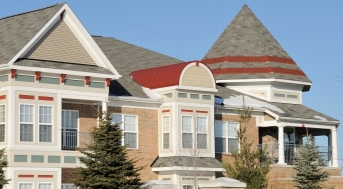When it comes to age 55 and older retirement communities, there are a number of different options in the marketplace. Some senior living providers cater to those who are able to live fully or mostly independently, while others accommodate those who require more assistance with the regular activities of daily living or higher levels of healthcare. Still other providers span the entire continuum of care, serving residents who live independently but also granting priority access to assisted living services and/or skilled nursing care when necessary.
Active adult communities versus rental retirement communities
Independent living options include active adult communities and rental retirement communities, which are not licensed to provide assisted living or healthcare services.
Active adult communities are planned developments offering freestanding homes with exterior maintenance included in the monthly dues. Sometimes these communities take the form of a co-op, whereby residents do not own their homes but instead are “members” who own stock in a corporation that holds all of the on-site property. Rental retirement communities, also referred to as independent living centers, offer apartment-style residences and an array of services and amenities, usually including housekeeping, transportation, wellness centers, dining, and more.
But this is where it gets a little tricky. Independent living centers are sometimes confused with assisted living facilities because residents may hire in-home care providers when assisted living needs arise. In the case of a true, independent-only retirement community, these caregivers are not staffed by the community, although they may have to be approved. The assisted living needs of residents are usually not as advanced as you might find in a stand-alone assisted living facility.
Striking a balance in senior living
A newly developed independent living center may have few residents requiring assisted living. Yet, as these residents age and begin requiring day to day assistance, the overall percentage of residents living totally independently begins to drop. A thriving community will continue to bring in younger, independent residents to help maintain the balance, but others may struggle to do so if the community feels too much like an assisted living facility.
Some senior living providers offer an independent living center and also have a licensed assisted living facility on site. These communities are often referred to as independent plus or catered living communities. Another type of senior living provider–usually referred to as a continuing care retirement communities (CCRCs) or life plan communities–provides independent living, as well as licensed assisted living and even 24-hour skilled nursing care in most cases.
— Learn more about life plan communities
Determining which type of senior living community is right for you can be challenging because so many factors come into play, but understanding the differences between the communities is a good first step toward making your choice.






